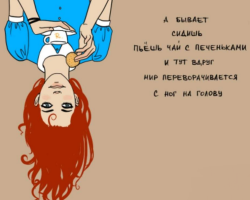The article will describe the causes of the appearance, symptoms and methods of treating jaundice in newborns.
Content
- Symptoms of jaundice in children: mechanical, caroten, physiological
- The causes of physiological jaundice
- The consequences of jaundice
- Bilirubin with the jaundice of newborns: increased and norm
- When is the jaundice in newborns?
- A month for a child, but the jaundice does not pass: why?
- Treatment of jaundice
- Lamp with jaundice: how much to lie?
- Ursofalk for newborns from jaundice
- Hofitol with jaundice in newborns
- Video: Komarovsky jaundice
Young parents are often scared by the fact that their newborn baby begins to turn yellow, as if with jaundice.
And although the jaundice in newborns is not easy in the life of the baby, you should not be scared. This is a completely natural process that all kids experience. If there are fears, then consult a children's doctor. It will more accurately establish a diagnosis and indicate the causes of the disease.
There are several types of jaundice in babies:
- Mechanical jaundice. This type of disease occurs if bile cannot normally separate from the liver. This occurs due to a violation of the biliary bubble, bile channels. Stagnation occurs, which causes the symptoms of jaundice
- Physiological. This type of jaundice is normal for babies and is due to physiological restructuring in the body
- Carotine. It occurs due to the excessive content of carotene in the diet of Malus (with breastfeeding). Carotine is found in orange products: carrots, orange, pumpkin
Symptoms of jaundice in children: mechanical, caroten, physiological
- Physiological jaundice usually occurs in the first month of life, but not immediately after birth
- But mechanical jaundice can manifest itself a few days after birth, when physiological changes have not yet come
- Also, it is necessary to take into account the fact of infection of the baby with pathogenic organisms that adversely affect the liver
- It is extremely difficult to diagnose the type of jaundice on your own, a specialist should do this. External symptoms practically do not distinguish one type of disease from another
- With jaundice, the skin of the baby and whites of the eyes acquire a yellow tint, a chair may be disturbed. With physiological jaundice, symptoms pass after 2 - 3 weeks

The causes of physiological jaundice
- One of the decay products of hemoglobin, which is contained in the blood, is the substance of bilirubin. It is it that can color the skin of a person in a yellowish color
- Bilirubin appears in large quantities in the blood of newborns, as physiological restructuring begins
- When the baby is in the womb, then in his red blood cells one type of hemoglobin. When he begins to breathe lungs, he changes others
- The old hemoglobin is destroyed, actively breaking up and turning into bilirubin
- Bilirubin enters the baby’s liver and there is neutralized by enzymes. However, there are so many of it during this period that the load is not colossal liver
- Further, Bilirubin comes out with urine. The jaundice stops when all decay products are removed from the body
The consequences of jaundice
- If the jaundice is physiological, then it will not bear any negative consequences
- More than 60% of children suffer from jaundice, if the baby is not full, then this percentage is still increasing
- In rare cases, there may be complications that affect the nervous system of the baby
- If the level of bilirubin is too high, then it cannot completely withdraw from the body. Then pathological changes are possible
- If the norm is exceeded, the baby begins to scream monotonously or becomes sluggish and does not apply to the chest
- With these symptoms, you need to immediately consult a doctor

Bilirubin with the jaundice of newborns: increased and norm
There is a table that indicates the norm of bilirubin in the baby’s blood. You can find out the amount of this substance by passing a blood test.

When is the jaundice in newborns?
- Jaundice in infants can begin already 4-5 days after birth
- It usually lasts up to three weeks, gradually decreasing
- Already on the 21st day, the jaundice should completely pass
- In rare cases, the jaundice lasts longer. But for this there are a number of physiological reasons
A month for a child, but the jaundice does not pass: why?
- If the jaundice has not passed in a month, then this means that the bilirubin cycle failed, and it is not excreted from the body, as it should
- This can happen due to liver dysfunction. Perhaps there were some innate defects or hepatitis. A long jaundice may indicate that the liver simply does not cope with the removal of bilirubin
- Also, there may be stagnation of bile due to improper functioning of the gallbladder and biliary tract
- Another reason is an excessive amount of bilirubin, which does not stop arising. This is due to rare blood diseases

Treatment of jaundice
- Jaundice usually proceeds under the supervision of a pediatrician
- If everything goes within normal, then the jaundice does not require treatment with the use of drugs
- One of the recommendations for the easy course of this disease is to be under the sun's rays. However, this is not quite useful for the child’s body. Therefore, special lamps are used
- Recommended plenty of drink and frequent feeding. This provokes good liver work
- In rare cases, when the norm of bilirubin goes off scale, medications are used and blood transfusion is done
- If the jaundice appeared not only as a result of physiological causes, but due to mechanical changes, then additional treatment is attributed
- Any procedures and taking drugs must be carried out strictly under the supervision of a pediatrician
Lamp with jaundice: how much to lie?
- The procedure for applying a lamp in jaundice is called phototherapy
- It is under the influence of bright light rays that harmful bilirubin begins to actively display
- Phototherapy is completely safe for the baby's body
- With normal jaundice, the lamp is used for several hours a day
- With severe flowing, the child is placed under the lamp in almost any free time
- Phototherapy and its norm will be able to appoint a pediatrician by assessing the state of the newborn

Ursofalk for newborns from jaundice
- Ursofalk is a drug for protecting and maintaining the liver
- It is usually prescribed if the jaundice passes longer than the prescribed time
- For newborns, Ursofalk is available in the form of a suspension. Usually 10 ml of the drug per 1 kg of baby weight is prescribed
- Ursofalk is used before bedtime
- Ursofalk has side effects and contraindications
- You can use the drug only after consulting a doctor
Hofitol with jaundice in newborns
- Hofitol is a drug based on the natural artichoke extract. It activates the outflow of bile and simplifies the liver work
- When using Hofitol, bilirubin begins to be removed much more actively
- For use, use a solution of Hofitol, which is prescribed by a doctor
- Usually prescribed from 1 to 3 drops of this drug three times a day
- There were no side effects when using Hofitol. But like other drugs, it must be used with caution and under the supervision of a pediatrician






